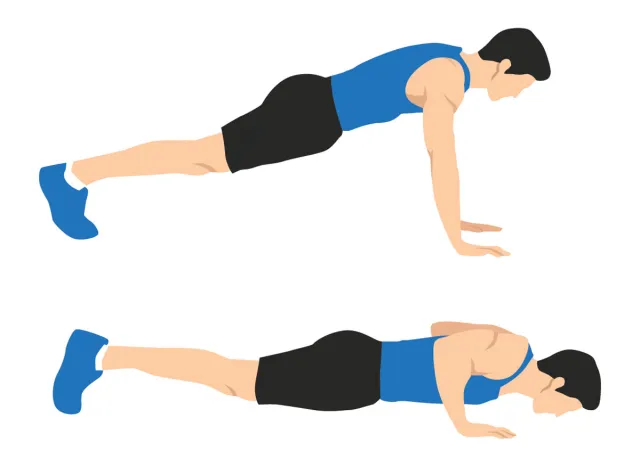If You Can Do This Many Push-Ups Without Stopping, Your Upper Body Strength Is Elite

Push-ups are more than just a fitness test. Think of them as a time-tested measure of upper body strength, muscular endurance, and core control. Whether you’re training at home, at the gym, or knocking out reps during a fitness test, your push-up performance says a lot about your fitness level. They require no equipment, travel well, and scale easily to match any goal.
But here’s the real kicker: How many push-ups can you do without stopping? This number shows your relative strength, muscular endurance, and work capacity. And contrary to what many believe, it’s not just about brute arm power. Proper push-ups demand coordination between your chest, shoulders, triceps, and core.
In this guide, you’ll not only learn how to master the perfect push-up but also discover how your max rep count stacks up—and what to do if you want to take it to the next level. Ready to see if you’re elite? Let’s break it down.
How to Complete a Perfect Push-Up

Before we talk numbers, let’s dial in your form. A “perfect” push-up isn’t about speed or slamming out as many reps as possible with sloppy technique. Good form ensures you engage the right muscles, avoiding injury, and become stronger.
How to Do It (Step-by-Step)
- Start in a high plank position with your hands directly under your shoulders and feet together or hip-width apart.
- Brace your core to keep your body straight from head to heels.
- Lower your body by bending your elbows at about a 45-degree angle from your sides.
- Descend until your chest is about an inch from the floor. Don’t let your hips sag or flare up.
- Push through your palms to return to the starting position, fully extending your elbows.
- Keep your body tight throughout: no arching, dipping, or shifting.
What Your Score Says About Your Upper Body Strength

Now for the fun part: how do you stack up?
Below is a rough breakdown of how your push-up count measures your upper body strength and endurance. These benchmarks are based on unbroken, full-range push-ups performed with solid form (no half-reps or flared elbows!).
Below Average: You may need to work on strength and stability before increasing intensity.
- Men: Fewer than 10 push-ups
- Women: Fewer than 5 push-ups
Average: A solid baseline. You’ve got decent upper body endurance, but there’s room to grow.
- Men: 10 to 20 push-ups
- Women: 5 to 15 push-ups
Above Average: You’re in great shape and can easily handle most bodyweight workouts.
- Men: 21 to 35 push-ups
- Women: 16 to 30 push-ups
Elite: You’ve entered elite territory. This level showcases exceptional upper body strength, endurance, and control.
- Men: 40+ push-ups
- Women: 35+ push-ups
How to Improve Your Push-Up Strength

Want to boost your numbers? Improving push-up strength means strengthening the muscles, tightening your form, and training smart.
Push-Up Strengthening Exercises:
- Elevated Push-Ups: Great for beginners to build strength through a reduced range of motion.
- Negative Push-Ups: Focus on lowering slowly to build eccentric strength and control.
- Diamond Push-Ups: Emphasize the triceps and challenge your core stability.
- Dumbbell Chest Press: Builds foundational pressing strength and power.
- Front Plank + Shoulder Taps: Improves core strength and shoulder stability for cleaner reps.
Form Tips:
- Engage your glutes and abs: this keeps your body from sagging.
- Screw your hands into the floor: this creates shoulder stability and protects your joints.
- Keep your elbows at 45 degrees: flaring too wide can irritate your shoulders.
- Don’t rush: smooth, controlled reps build better strength than fast, half-range reps.
How Often to Train & Test
Want to increase your push-up performance without burning out? Here’s how to train and test smart:
- Train push-ups 2 to 3 times per week: include a mix of regular push-ups and variations.
- Incorporate upper-body strength workouts 1 to 2x/week with dumbbells, resistance bands, or cables.
- Test your max push-ups every 3 to 4 weeks to track progress without overtraining.
- Take rest days seriously: your muscles need recovery time to grow stronger.
Bottom line: Push-ups are one of the clearest indicators of upper body fitness and are accessible to nearly everyone. Focus on quality reps, progressive training, and consistent effort, and you’ll build the strength and endurance to push past your personal best. Keep showing up; elite-level strength won’t just be a number, it’ll be your new normal.